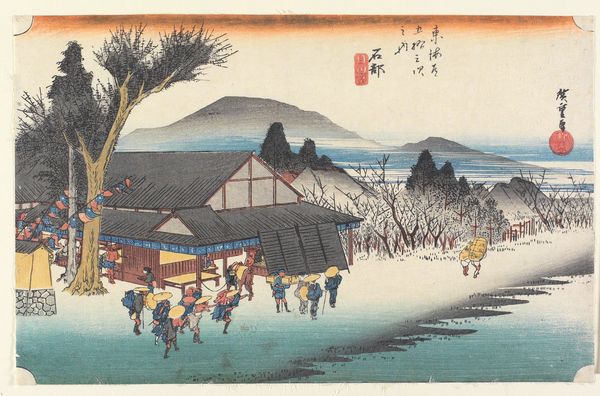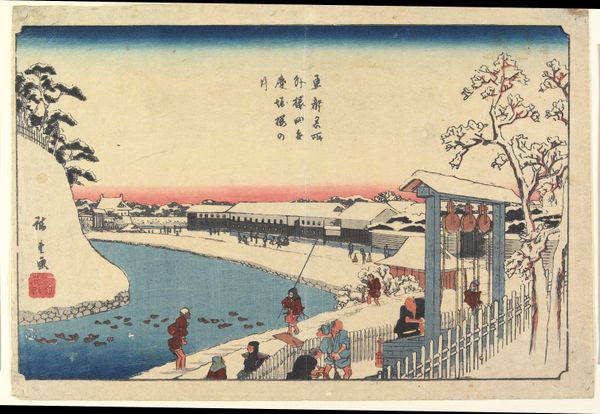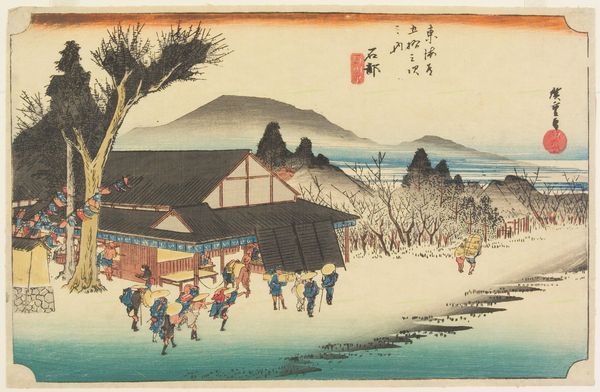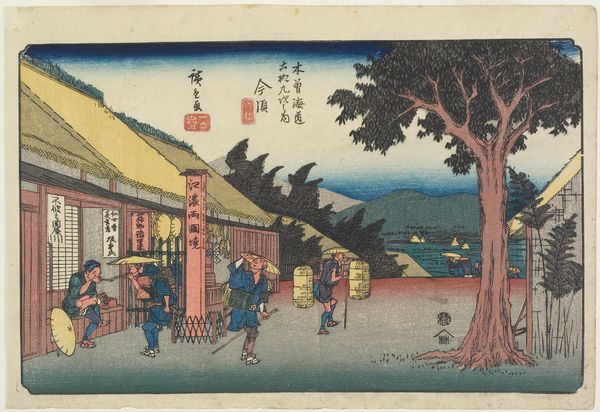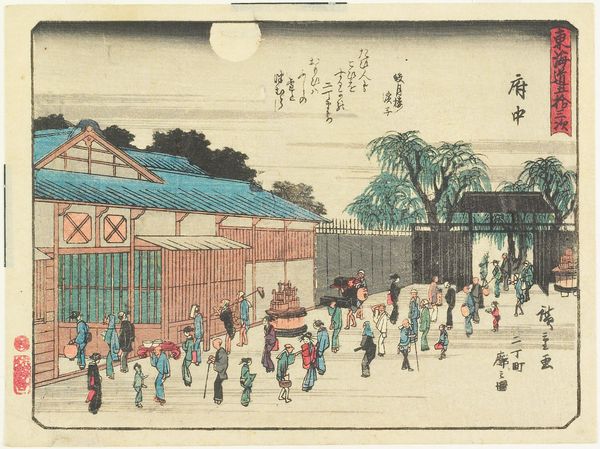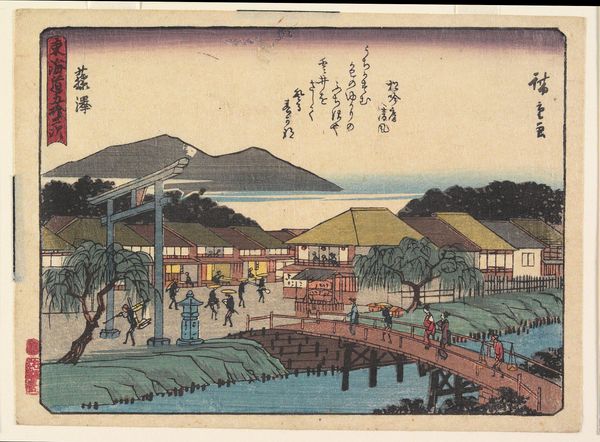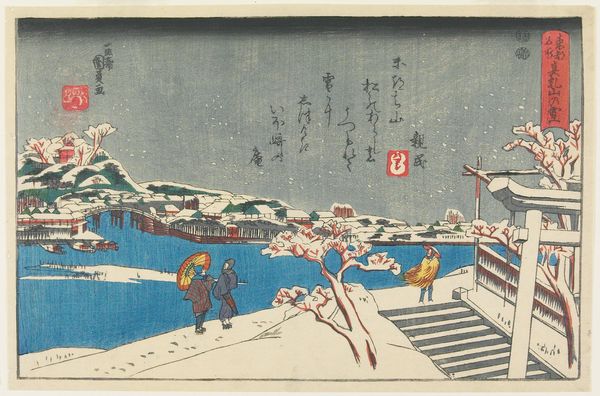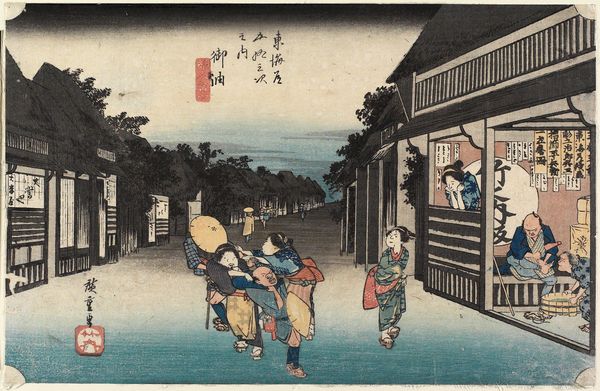
Narumi- Famous Arimatsu Tie-dyed Fabric c. 1832 - 1833
0:00
0:00
print, plein-air, photography, ink, woodblock-print
# print
#
plein-air
#
asian-art
#
landscape
#
ukiyo-e
#
photography
#
ink
#
woodblock-print
Dimensions: 9 1/2 × 14 5/16 in. (24.1 × 36.4 cm) (sheet, horizontal ōban)
Copyright: Public Domain
Editor: This is "Narumi- Famous Arimatsu Tie-dyed Fabric," a color woodblock print by Utagawa Hiroshige from around 1832. It feels so tranquil, almost like a stage set. What symbols or deeper meanings do you see woven into this seemingly simple scene? Curator: Notice how the dye shop on the left almost spills onto the road, blurring the line between commerce and the everyday? Tie-dye itself has powerful symbolism—its deliberate distortions reflecting impermanence. But beyond the fabric, look closer. Editor: At what, specifically? The people on the road? Curator: Yes! The figures progressing along the road... Are they merchants? Travelers? Consider how these figures contribute to the larger narrative. It evokes the continuity of life's journey, wouldn't you agree? This reminds me a bit of old Chinese landscape scrolls where figures were purposely painted small, so we can feel how small humans can be when facing a world of constant and immense change. Editor: That's interesting. The travelers become a part of something bigger. I also thought they just were just normal people commuting. Curator: But doesn't this then echo a sentiment shared through countless generations? Editor: I guess so. I hadn't considered that perspective at all before! Curator: Understanding these visual languages lets us glimpse cultural memories. And now you are thinking in their "language." Wonderful!
Comments
minneapolisinstituteofart almost 2 years ago
⋮
The village of Arimatsu was founded in 1608 along the Tōkaidō, Japan’s most important road, which connected Edo (today’s Tokyo) with Kyoto. The area east of what today is the city of Nagoya was uncultivated, and robberies were frequent. Clay in the soil didn’t allow for rice farming, but indigo could be planted. After a long period of military conflicts ended, people became more affluent and were interested in nicer clothes. Before long, tie-dyed textiles (shibori) became Arimatsu’s main enterprise; by the 1640s, “Arimatsu shibori” was known all over the country as a special product purchased by many travelers.
Join the conversation
Join millions of artists and users on Artera today and experience the ultimate creative platform.

